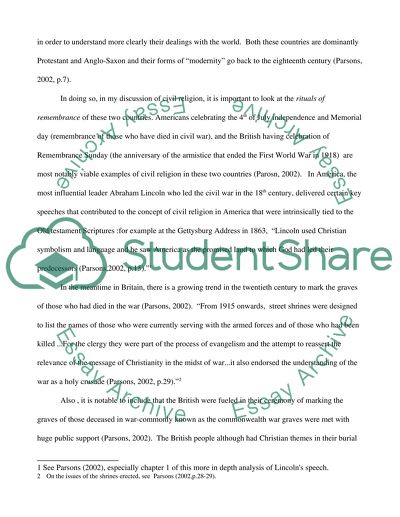Cite this document
(“American and British Civil Religion Essay Example | Topics and Well Written Essays - 2000 words”, n.d.)
American and British Civil Religion Essay Example | Topics and Well Written Essays - 2000 words. Retrieved from https://studentshare.org/religion-and-theology/1502892-american-and-british-civil-religion
American and British Civil Religion Essay Example | Topics and Well Written Essays - 2000 words. Retrieved from https://studentshare.org/religion-and-theology/1502892-american-and-british-civil-religion
(American and British Civil Religion Essay Example | Topics and Well Written Essays - 2000 Words)
American and British Civil Religion Essay Example | Topics and Well Written Essays - 2000 Words. https://studentshare.org/religion-and-theology/1502892-american-and-british-civil-religion.
American and British Civil Religion Essay Example | Topics and Well Written Essays - 2000 Words. https://studentshare.org/religion-and-theology/1502892-american-and-british-civil-religion.
“American and British Civil Religion Essay Example | Topics and Well Written Essays - 2000 Words”, n.d. https://studentshare.org/religion-and-theology/1502892-american-and-british-civil-religion.


